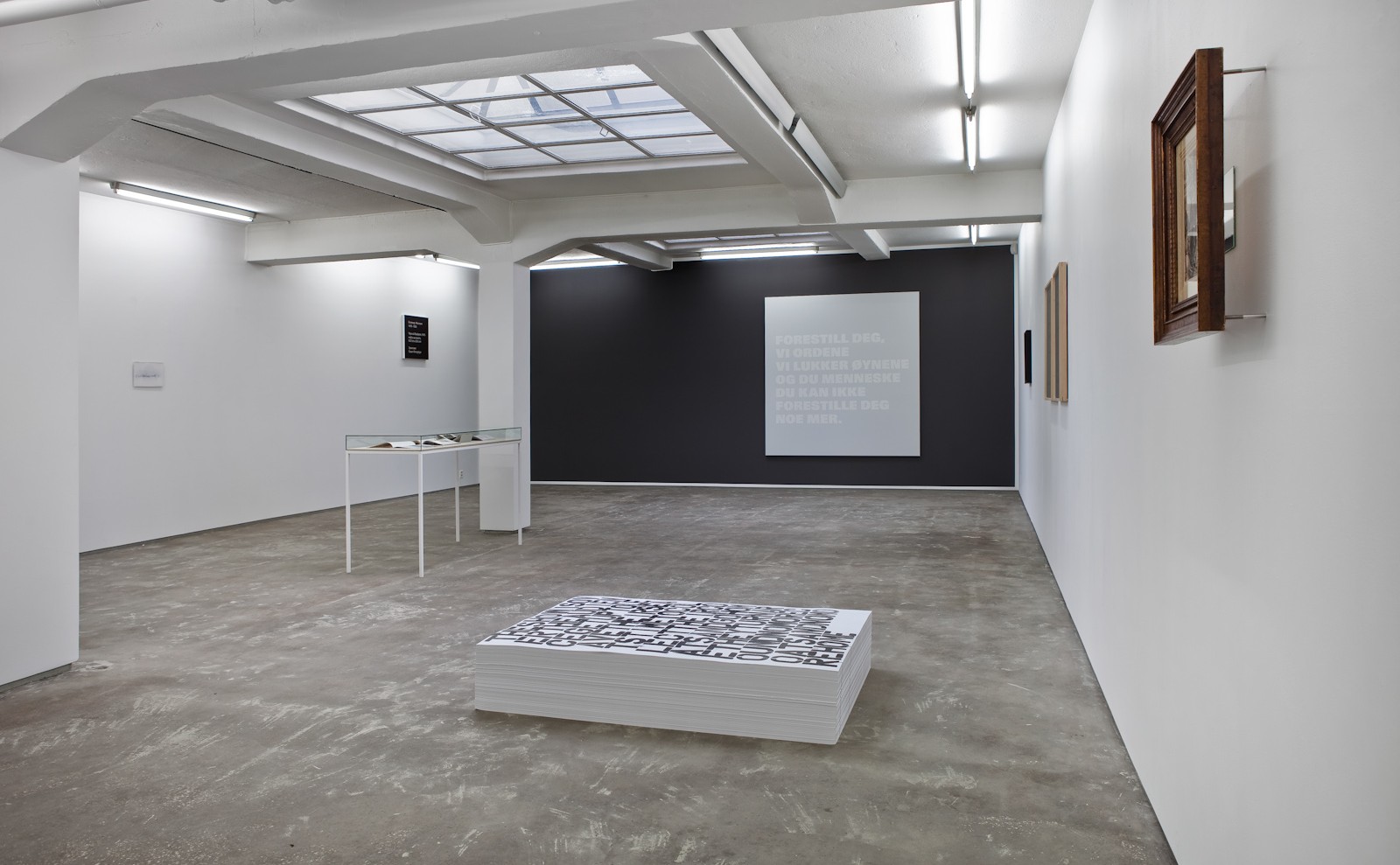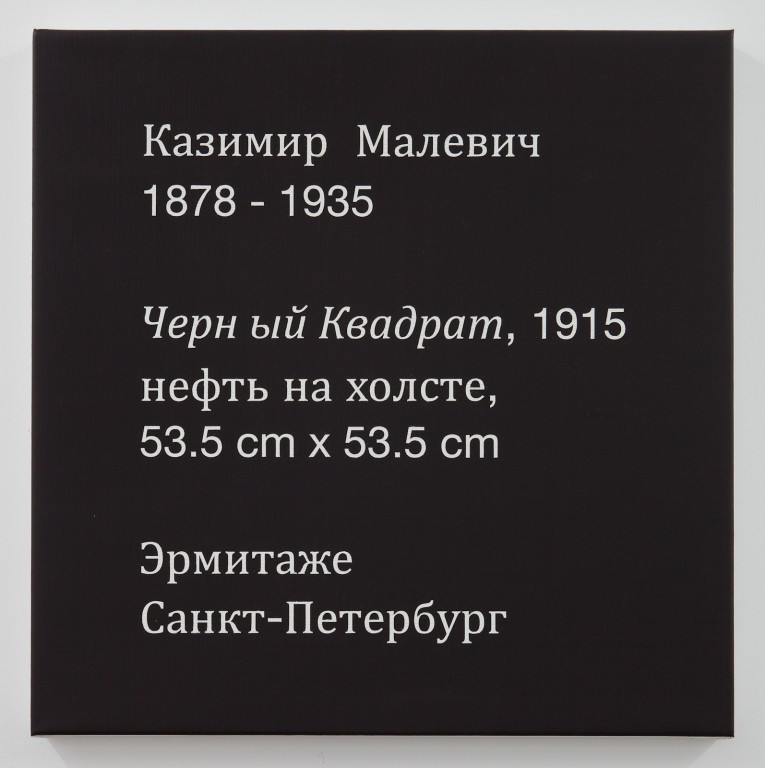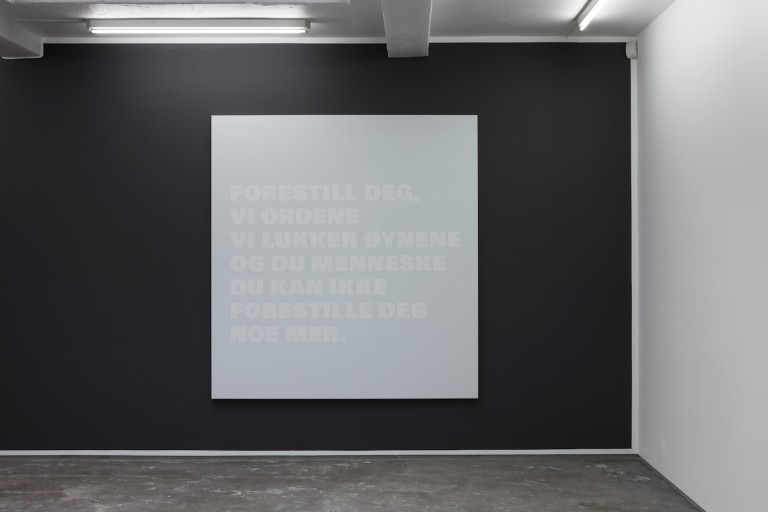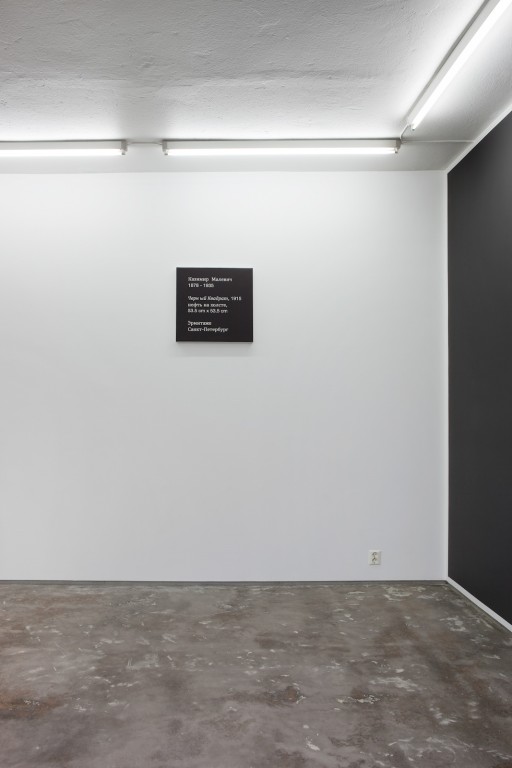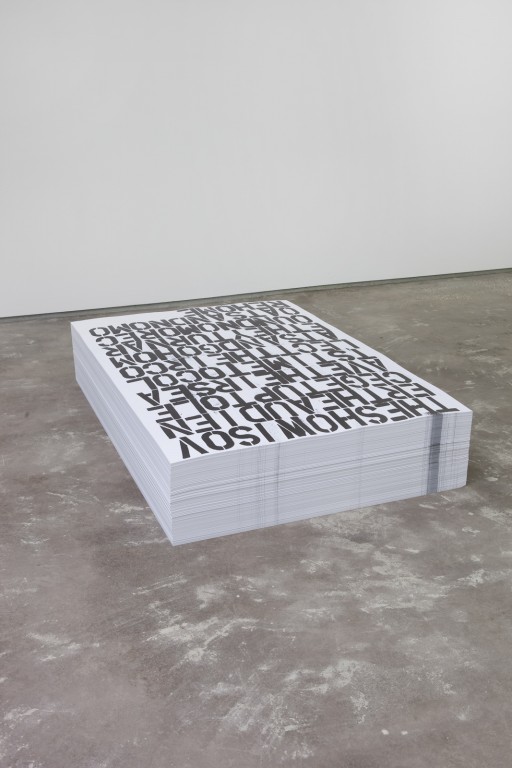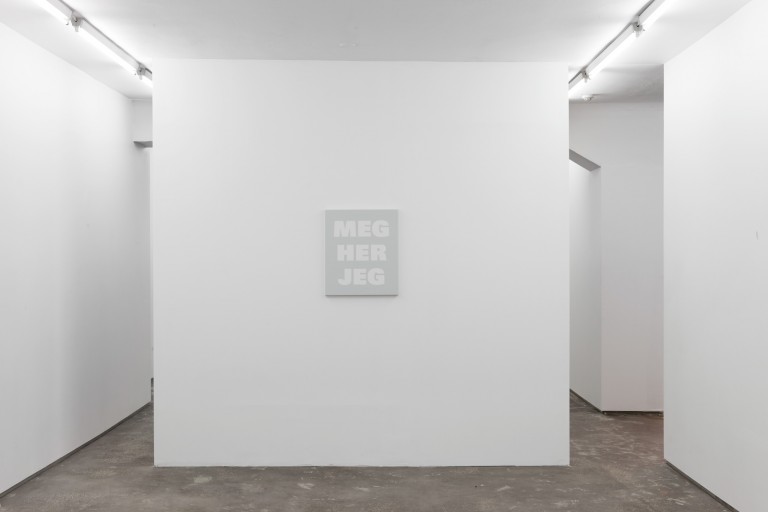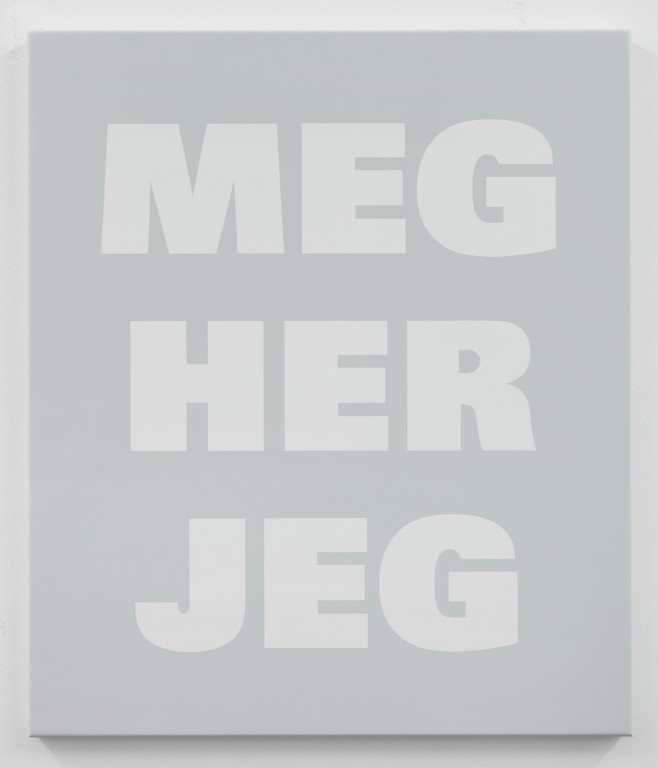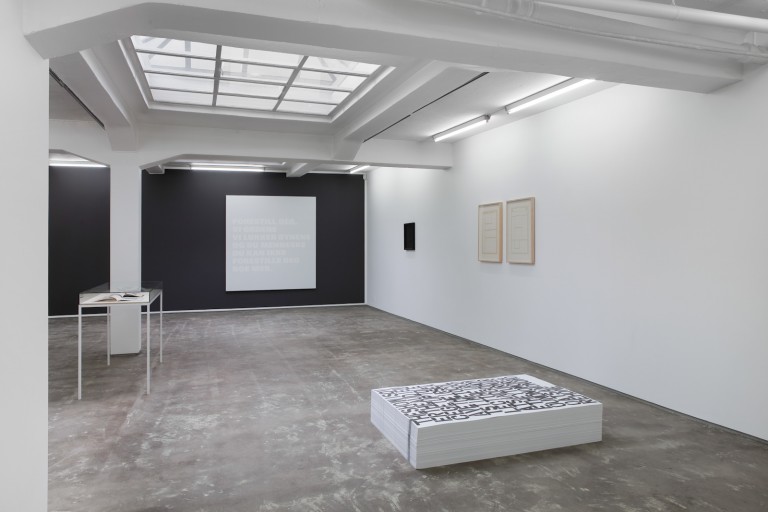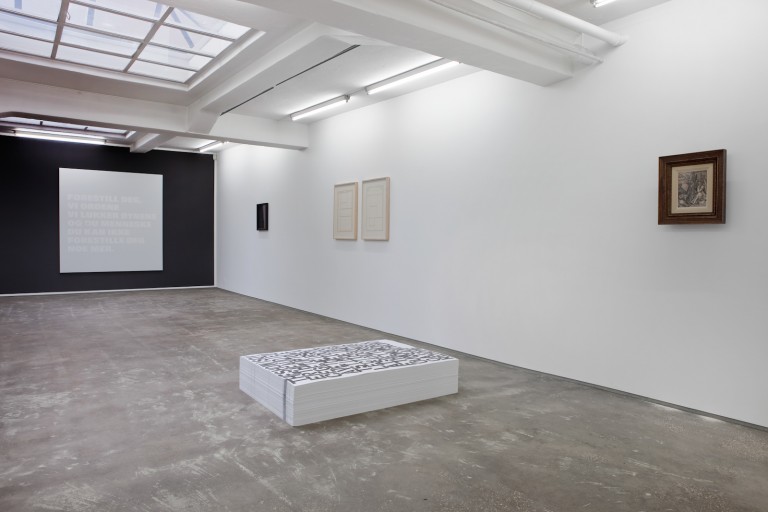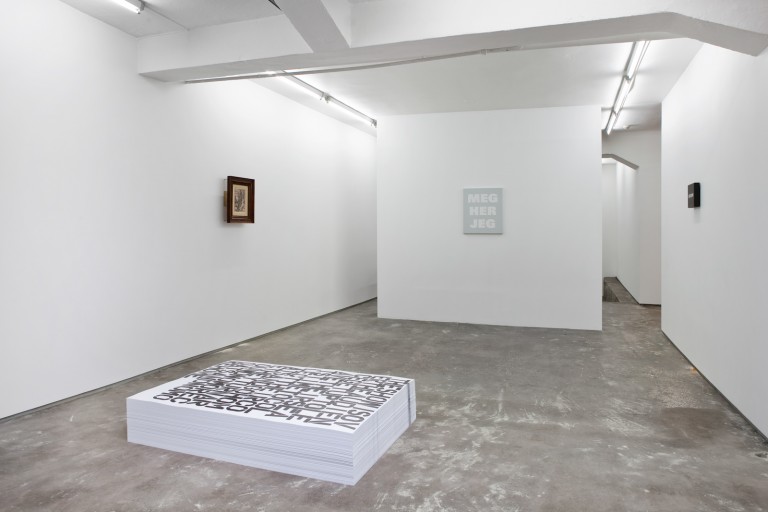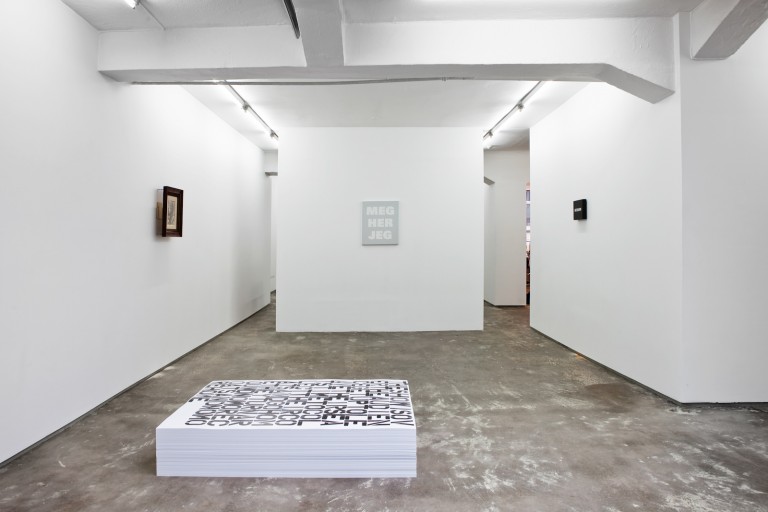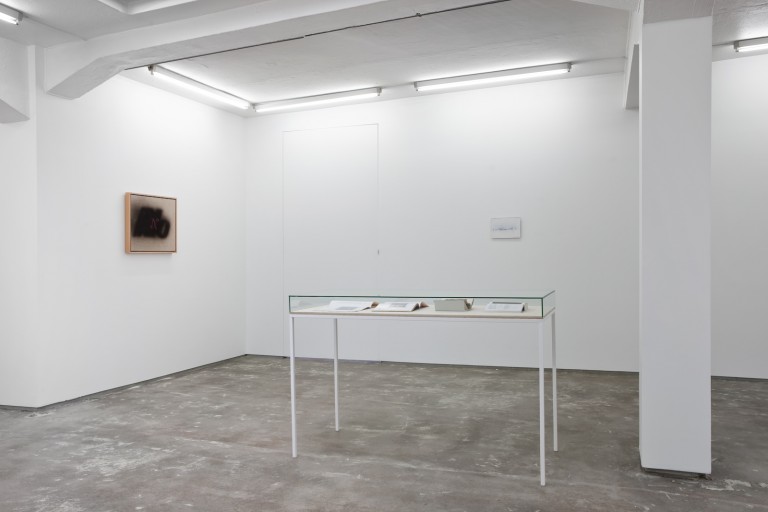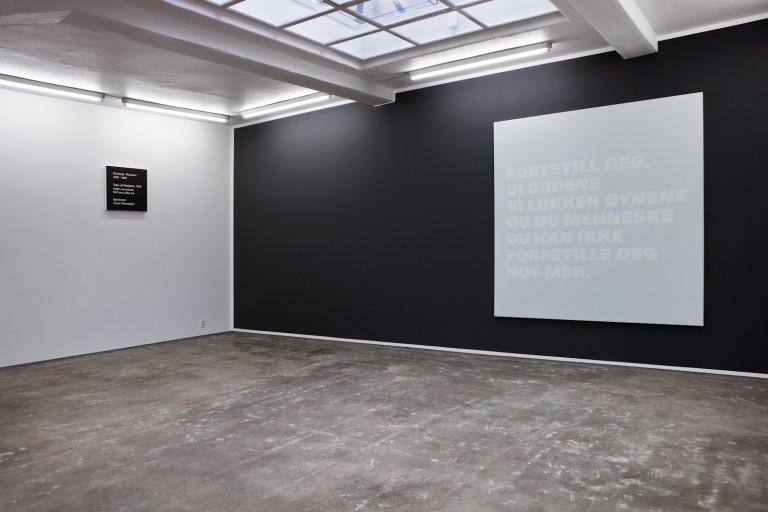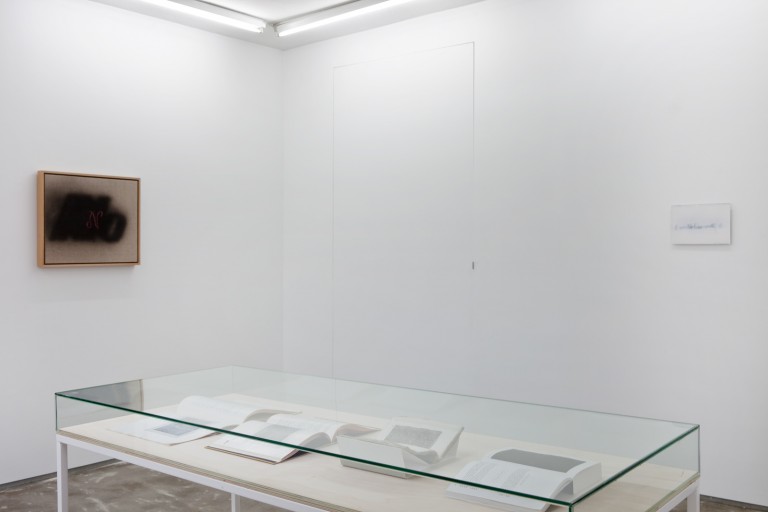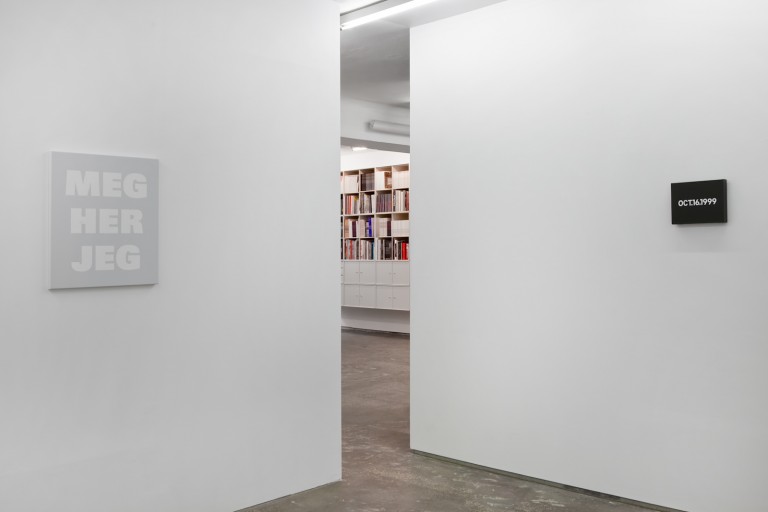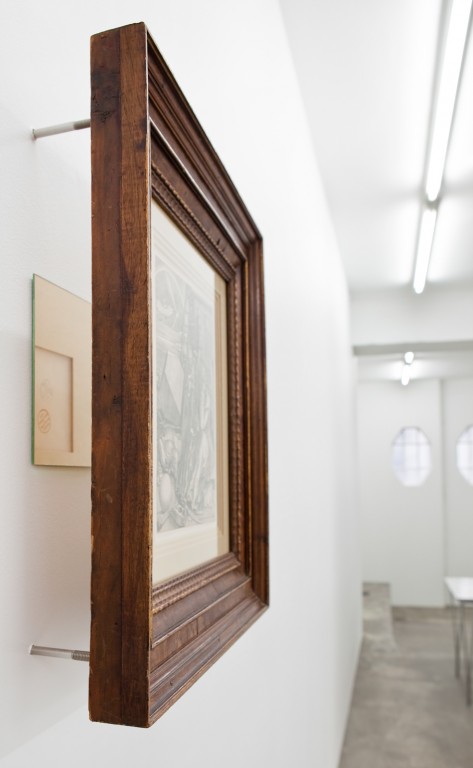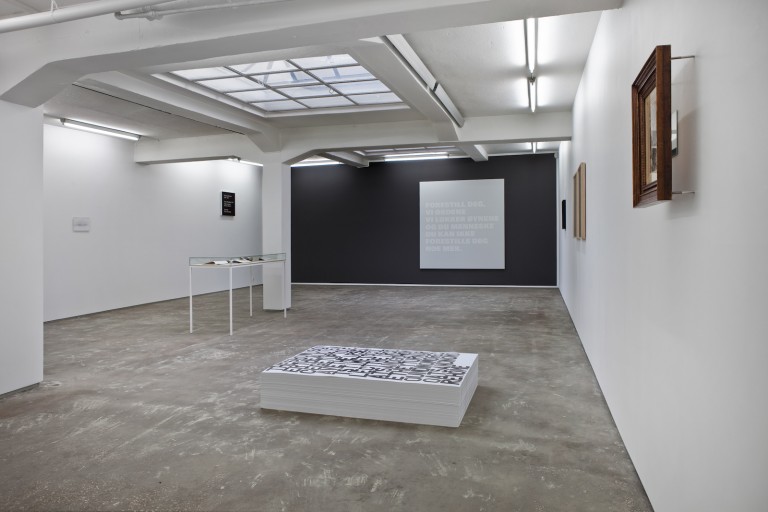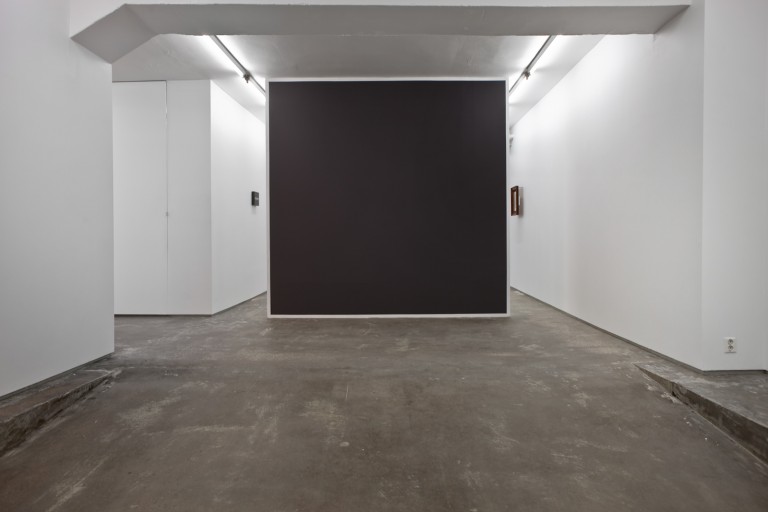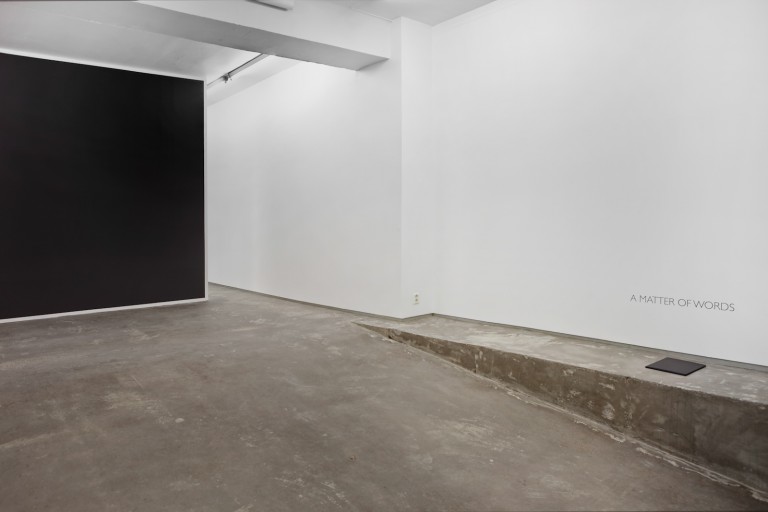OSL contemporary has the pleasure to announce the exhibition A Matter of Words, curated by Dag Erik Elgin in collaboration with the gallery. The show presents a selection of works that contemplate how the eye and the mind experience both the distinction and the relationship between word and picture or letter and figure. In some instances, the text is the whole picture. One may primarily associate such an investigation with the traditions of 1960’s and 1970’s conceptual art but A Matter of Words covers a timeline that stretches further in both time and expression; from the renaissance master Albrecht Dürer’s engraving Melancolia from 1514, via Laurence Sterne’s novel The Life and Opinions of Tristram Shandy, Gentleman from 1759 to renowned contemporary artists such as On Kawara and Ed Ruscha.
Laurence Sterne’s novel acts as a center-point of the exhibition. The book lies open to the page where the character Yorick dies. When Sterne arrives at this dramatic point in the story, with the words “Alas, poor YORICK”, it is almost as if the text can no longer bear the gravity of the situation, and Sterne allows a black rectangle to fill the following page; evocative of an empty grave, it is as if all the black type has concentrated to an intense point. No longer legible as written words, but still meaningful and resonant, the text has become picture.
The works in A Matter of Words relate to the exchange between text as written word, pictures of text and text as pictures. Around Sterne’s black rectangle radiate different works from different periods, all of which have in common their exploration of both a discursive and a visual platform; the works can be both literal and pictorial. The material methods represented in the show span from graphics and lead types, to oil paint and collages of cut-up books, readymades and pencil writing directly on the wall, as well as text fragments on posters stacked on the floor. Seen together, the works not only lead to an understanding of various interpretations and ambiguities of words and sentences, but also to a discovery of the purely visual quality of language and reading. Letters and whole pages of text can appear as figures and lines, separating them from the text’s semantic content and creating new meanings. The interpretive realm between figure, ground and context is presented here as a common concern for all graphic forms- whether they appear as picture or as text, or as both simultaneously.
Laurence Sterne’s black page finds an art-historical echo in Kazimir Malevich’s painting Black Square. A Matter of Words relates to this black image, painted in 1915, within a textual context by presenting the book The Non-Objective World (Die gegenstandslose Welt), published in connection with Malevich’s 1927 exhibition in Berlin. Black Square can also be seen as a text image, but here the relationship between text and picture are reversed; the black surface is, as in Sterne’s singular book page, surrounded by a white frame. In a book, this is the natural boundary between the text and the edge of the paper- a margin. Malevich’s white framing of the black square can be experienced as a corresponding margin of a book page, and therefore, the black image, as text. This text can be understood as many layers of print on top of each other; an architecture or “architext” (Malevich’s own proposed concept), where the opaque black surface is a representation of the sum of all texts.
The originally non-objective (“gegenstandslose”) text becomes an object to Malevich, something that takes on physical characteristics. The text becomes a domain for physical intervention and interaction. Vibeke Tandberg gives this point an explicit form, by cutting up paper and text in her collage Monday, January 2, 2006. In this work she has physically removed all words and pictures from an edition of the newspaper The International Herald Tribune, to then present the pages as empty skeletons. Felix Gonzalez-Torres’ and Christopher Wool’s collaboration “Untitled” can be seen as an extension of the idea of text and picture as an object subject to interaction; it is literally a stack of posters that the public may take away with them. The text is taken from the Belgian philosopher and Situationist Raoul Vaneigem’s manifesto The Revolution of Everyday Life, and is printed without spaces between the words. The compact presentation of the letters makes the sentence structure disappear; the meaning is obscured and then reappears through the visual effort of reconstructing the language.
On Kawara’s work Oct. 16, 1999 is from the renowned Today series, comprised of the artist’s “date paintings”. Different specific dates are painted on monochrome surfaces. In these works, Kawara brings together, in one and the same graphic figure, the painting’s conceptualization and creation. History painting’s three, otherwise separate, moments in time are connected: the historic date of an event, the date of the painting’s creation, and the date of the viewer’s meeting with the work. Dag Erik Elgin’s piece can be interpreted as an extension of both Kawara’s work and Malevich’s book. It is a painting from the series La Collection Moderne in which Elgin replicates the museum labels of famous paintings as oil on canvas works. Elgin invites, as does Kawara in his “date paintings”, to an investigation of the registration of an historical moment, although in Elgin’s case, within the sphere of the museums’ own factual records of historical works of art. During the opening, Hannah Mjølsnes will contribute with a performance between two participants who, together, create a text. This work takes place within the structures that already exist in the gallery space.
Kristian Skylstad and Ed Ruscha engage with words in their most basic forms. Both Ruscha’s painting with the text “N NO” and Skylstad’s single “Enter” key from a computer keyboard represent true poetry in succinct pictorial form. A K Dolven’s text, “When I discovered the end, I wanted to live really long”, and Rémy Zaugg’s work, “FORESTILL DEG, VI ORDENE VI LUKKER ØYENE OG MENNESKE DU KAN IKKE FORESTILLE DEG NOE MER.” may seem more complex, but they also lay before us a conceptualization and imaging of human experience. The works inspire us with an insight that appears in a revelation, as opposed to the product of a precise analytical method; something similar to Albrecht Dürer’s “Melancolia”, which illuminates the sky as a bolt of lightning, over the brooding man surrounded by the physical world’s abandoned scientific instruments. As such, each object in A Matter of Words is an experience that highlights the relationship between the imaginary and the concrete, between language’s syntactic structure and its simultaneously pictorial, physical and immaterial appearance.
Publications by Laurence Sterne and Kazimir Malevich
Intervention by Hannah Mjølsnes
